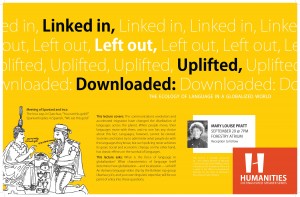Well, perhaps I shouldn’t say Collapse “fans”, but rather scholars…. I would assume most people are not rooting for societal collapse!
In this week’s Proceedings of the National Academy of Sciences, Zhang et al. look at specific ecological, economic, and social variables that changed with the global cooling event from 1560 to 1660 AD, a period of widespread societal upheaval particularly in Europe. Previous studies have found that civilizations in the past have been severely disrupted by climate change, but generally there have been insufficient records of most of the social and economic characteristics of these civilizations to study their collapse in detail, other than what we can gather from abandoned settlements and human remains. For more recent preindustrial societies, records indicate that it is most likely the rapid decline in agricultural production that is a proximate cause of the unravelling of a civilization, with climate change implicated in widespread crop failures. Studies like this fill in many details of a general hypothesis of how and why societies collapse, started by Joseph Tainter in the 1980’s and popularized by Jared Diamond’s book Collapse in 2005.
In this PNAS article, the authors look at European societies during both peaceful times and times of upheaval, to determine if the “dark” ages were correlated with climate change and to identify which ecological (e.g., agricultural production), social (e.g., population size, average height), and economic (e.g., grain prices, real wages) characteristics are most vulnerable to this change. They paid particular attention to whether the presumed cause preceded the effect, a detail that has been missing from previous studies due to a lack of adequate resolution in temporal data. They found that variables associated with agricultural production and per capita food supply followed immediately after the start of the global cooling period, with later increases in war, famine, and migration that were a likely consequence of food shortages and spiraling food prices.
Here was one of the findings that jumped out at me: “Grain price could be taken as an indicator and direct cause of conditions of harmony or crisis in preindustrial Europe.” This is a very strong argument for the importance of local and robust agricultural systems to sustainability, and we have already seen riots over food prices in the past few years.
The authors conclude with a bold statement: “Our findings have important implications for industrial and postindustrial societies. Any natural or social factor that causes large resource (supply) depletion, such as climate and environmental change, overpopulation, overconsumption, or nonequitable distribution of resources, may lead to a general crisis, according to the set of causal linkages in Fig. 2. The scale of the crisis depends on the temporal and spatial extent of resource depletion.
Hmmm…. has anyone looked at the Gini Index lately?
